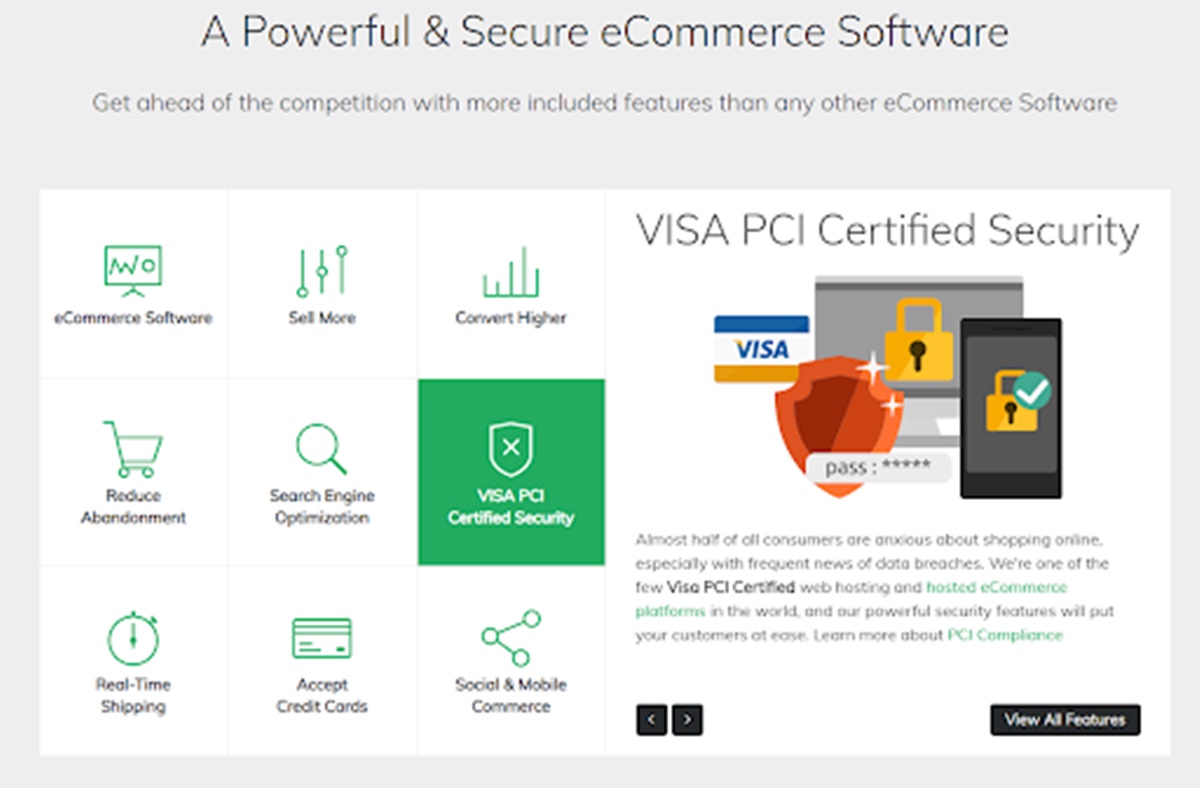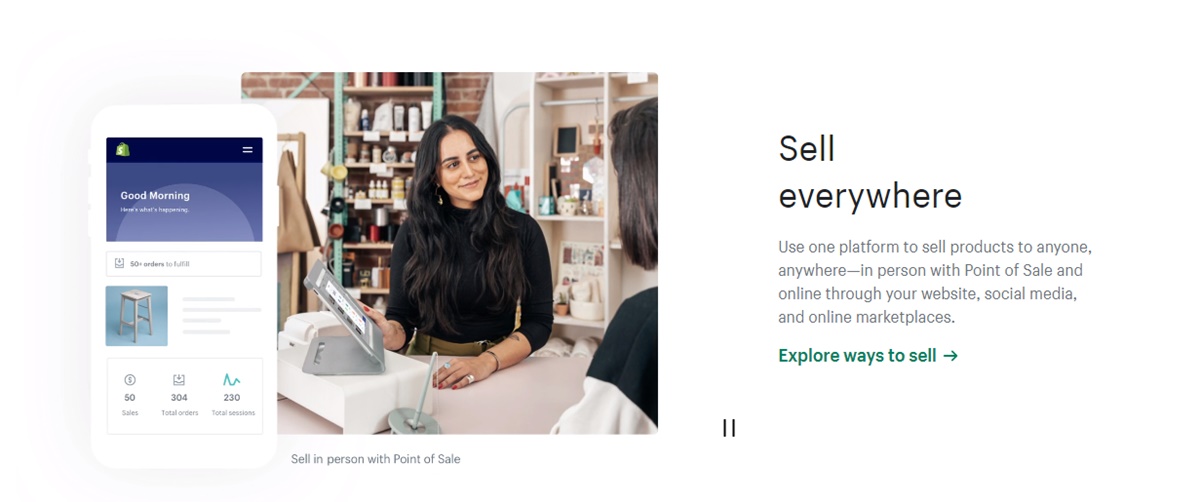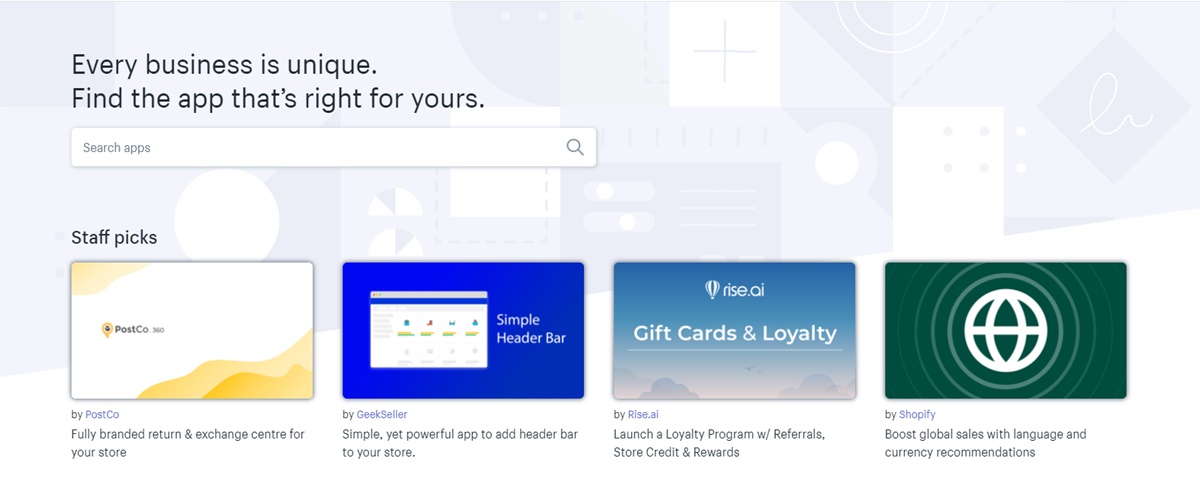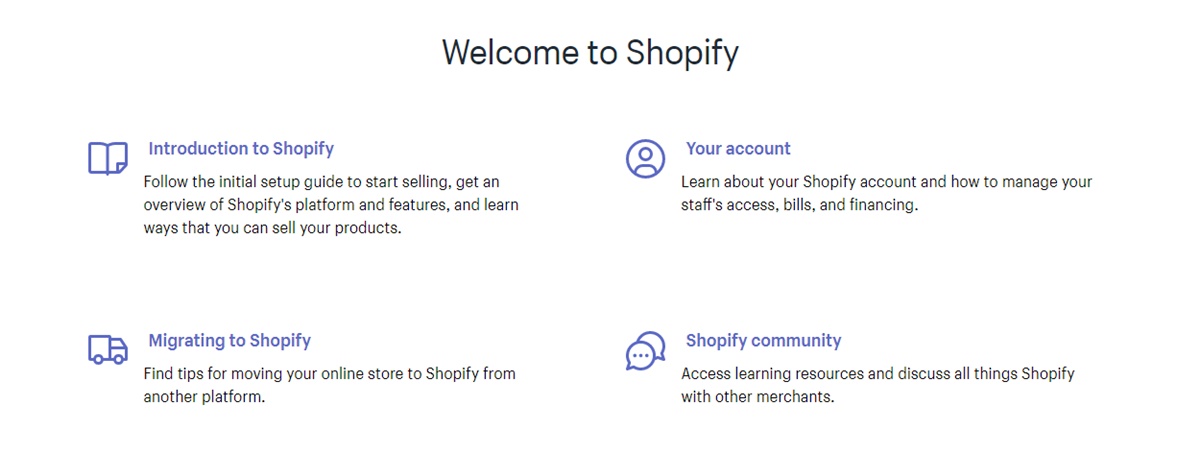3dcart vs Shopify Compared: Battle of Two eCommerce Platforms
A good eCommerce platform can do more than just selling your products – it can build your online store in an easy, enjoyable, and affordable way. When it comes to 3dcart vs. Shopify, they are two of the most recognizable names in the field, which may explain why you end up on this post too.
Shopify is a top-rated eCommerce platform, while 3dcart has an affordable, powerful backend. Each has its own pros and cons, as well as suitable users. That being said, I know it can be a challenge to decide on the right platform for your online business. That’s why I’ve tested both Shopify and 3dcart to create this article.
I’m going to show you all the essential aspects of comparing 3dcart and Shopify, so you will know which platform is the right decision. This is the ultimate battle between 3dcart vs. Shopify; let’s begin!
What is 3dcart

To begin, 3dcart is a feature-rich eCommerce platform that allows users to build and launch an online store. It is trusted and used by over 22,000 merchants worldwide. On the whole, 3dcart has all the features you need to start an eCommerce business. With the platform, you can choose from a wide range of mobile-optimized themes and customize to your own needs using coding.
3dcart may not have too many users, but it is still a main player in the eCommerce industry. It allows sellers to house a category of products and accept payments from customers. You can also manage your business with inventory, marketing, shipping, and SEO. There are four standard pricing plans with different levels of advanced features. For larger companies, 3dcart has an enterprise plan as well.
What is Shopify

Shopify, on the other hand, is a well-known eCommerce solution, which has grown steadily since 2006 to host more than 1 million stores in the world. It gives you the ability to create, customize, and launch your online store with many included features to streamline your work process.
Using Shopify, you can choose from one of its professionals and responsive themes to change your storefront. All is done on a simple drag and drop dashboard that you can immediately see what you have adjusted. In your store, you can add products, manage inventory, and give customers a full experience from visiting to purchasing.
You also get access to an app store and a theme store to add functionality or renew the storefront. There are many gateways to integrate, as well. If you decide to sell on Shopify, there are three basic pricing plans and two special plans for existing websites or enterprises level. There is a mobile app so you can manage the store on the go too.
Pros and Cons of 3dcart and Shopify
| 3dcart | Shopify | |
|---|---|---|
| Pros | - Great inventory tools - SEO prompts - No transaction fees |
- Highly rated eCommerce platform - Easy to use and setup - Sell across multiple channels - 24/7 customer care |
| Cons | - Quite hard to use - Not highly recommended - No mobile app |
- Transaction fees on many payment methods - Costs can add up each month with apps - Not the best features for SEO |
3dcart vs Shopify compare
Both 3dcart and Shopify are hosted solutions, which means you don’t need to worry about getting a third-company hosting company. The requirements are simple, too; all you need is a computer, internet access, and a web browser to run them. Nothing needs to be downloaded. Now, we are going to look at the most concerning features when choosing an eCommerce platform to see which is better, 3dcart or Shopify.
Functionality compare

eCommerce platforms exist to help you sell online more easily. But, do 3dcart, and Shopify help you with that? Do they have the functionality that you need to run a business smoothly? Let’s find out.
3dcart is designed to make their software accessible to all merchants with a 15-day free trial, no credit card required. When you sign in to your account, you will be presented with setup steps and available tutorial videos. This will help you locate and learn about the most basic features.
The dashboard is quite friendly, and you can find everything on the left. Most of the features are there, but some are buried where I wouldn’t expect them there. For example, the Discounts part is under a tab called Promotion Manager. Next, you can start adding products, but it is a unique process. You enter basic product information like names, images, descriptions, and move to add a page for more advanced information. This includes shipping, inventory info, SEO descriptions, and more.
Discounts also have two steps to apply. The second page would let you apply promotions to a category or an order that has a specific product. The dashboard is big in tools, but it lacks an undo button, keyboard shortcuts, and an overall streamlined working process. In short, it was not really easy to use.
On the other hand, Shopify also has a 3-day free trial and offers just $1/month for merchants to try their software - which is highly rated by users for its intuitive design. When you first create your account, you are taken to a beautiful dashboard where you can find everything you need on the left.
Adding products is easy since all the information you need to enter is available on only one page. Discounts are similarly simple to set up, and you can make them available to specific products or categories. You can also limit the discounts to customer groups, minimum order total, and a number of uses.
What you will love is the effective design with an ‘undo’ button and many keyboard shortcuts to make working faster. The tools also have easily identifiable icons next to them. Compared to 3dcart, Shopify is easier to use and have their page perfected better for convenient usage.
So, in terms of functionality, Shopify is the winner with a huge range of eCommerce features, a well-designed dashboard, and good additional tools to make running an online store easier.
Pricing compare
You can see that both 3dcart and Shopify are quite similar in their functionality, so their pricing plans follow a similar model as well. Both are subscription models with monthly renewal fees. Neither service would require you to sign a contract, but you can get a discount on the monthly rate if you commit for a year or more. Let’s see how their pricing plans stand between each other and what features are included at each level.
With 3dcart, you will be billed monthly, but you can pay in advance for a full year and receive a 10% discount. Keep in mind that 3dcart doesn’t have a refund, so be sure it is the choice that you want to spend money on before committing to a year. All the pricing plans come with unlimited orders and bandwidth, no transaction fees, free domain registration, API access, built-in blog, and 24/7 phone support.
There are five pricing plans, which are:
| Startup Store | Basic Store | Plus Store | Power Store | Pro Store |
|---|---|---|---|---|
| $19/Month | $29/Month | $79/Month | $129/Month | $229/Month |
| 1 Staff User 2 email accounts Up to $50k in sales per year Only live chat support |
2 Staff Users 5 email accounts Up to $100k in sales per year |
5 Staff Users 10 email accounts Up to $250k in sales per year |
10 Staff Users 10 email accounts Up to $500k in sales per year |
15 Staff Users 30 email accounts Up to $1M in sales per year |
Shopify’s pricing plans are quite similar with a month-by-month basis. If you subscribe for a year, you can get a 10% discount, and if you pay for two years, you can get a 20% discount. One thing to notice is that Shopify does charge transaction fees and is very transparent about it. You will be charged 0.5% -2% processing fees based on your pricing plan and payment processor. But if you use Shopify Payments, no transaction fees would be included.
The basic Shopify plans include an online store and blog, Unlimited products, Access to multiple sales channels, Discount codes, Abandoned cart recovery, Free SSL certificate, and 24/7 support via phone, email, live chat.
Here are all Shopify pricing plans:
| Shopify Starter | Basic Shopify | Shopify | Advanced Shopify | Shopify Plus |
|---|---|---|---|---|
| $5/month | $39/Month | $105/Month | $399/Month | Negotiated (>$2000/month) |
| Add eCommerce features to an existing website Sell on Facebook Point of sale features |
Transaction Fee: 2.0% Two Staff Accounts Abandoned cart recovery |
Transaction Fee: 1.0% Five Staff Accounts Professional reports |
Transaction Fee: 0.5% Fifteen Staff Accounts Advanced report builder |
Enterprise-level A dedicated manager |
All Shopify pricing plans have a 3-day free trial, so you can try the functionality. At the first look, it appears that two platforms have similar price models. But Shopify has more app integrations, more themes, and stronger eCommerce tools. So, if you consider what is better for your budget, Shopify is worth more at the same price.
Sales features compare

Naturally, sales features are important to any eCommerce business. Both 3d cart and Shopify have the functionality for an online store, but which platform can help you actually make money? Let’s see.
While 3dcart lacks in design, it does have strong sales features. You have an extensive backend with space for unlimited products and shipping integrations with companies like UPS or FedEx. Also, 3dcart has SEO functions ready to use so your website can have better ranking on the search results. However, it has no mobile app so you can’t manage everything on the move.
Shopify, with a slick design, offers a good deal when it comes to selling online. It has unlimited products on all plans, abandoned cart recovery, a mobile app, and an app store with a huge range of third party and in-house integrations to streamline the working process.
Despite 3dcart’s strong features, Shopify is still a comprehensive eCommerce solution that offers the best sale tools. Although I have to give it to 3dcart for the SEO prompts, Shopify still offers more with a huge app store to streamline accounting, marketing, shipping, and more.
Store design compare

For any store to be successful, visitors need to enjoy visiting it in the first place. Does your store look professional? Is it easy to find a specific product? For website builders like 3dcart and Shopify, questions like these can be answered by looking at their template designs.
3dcart offers 93 theme templates with premium options costing $99 to $199. 50+ of these are mobile-responsive - which means your store would look nice when browsed on a mobile phone. While most designs look good (but a bit dated) and on-brand, some still lack basic features like navigation menus. There is no mobile editor, so you can’t design on the go.
You will have to edit 3dcart themes primarily using the HTML and CSS editor. There are drag and drop editor for HTML theme, but you must request to have it enabled. On the customize tab of a selected theme, most you can do is changing a bit of color and fonts, so it is not the greatest editor existing.
Shopify has a smaller choice than 3dcart with 72 themes, in which 8 are free and 64 are premium with prices from $140 to $180. But all these themes have a better design and responsiveness on all devices. Each theme has different variants, so you actually get two to three themes at the price of one. The themes also come with industry-specific features that can save you time on designing the storefront.
Where Shopify outshines 3dcart is its mobile app. You can edit your store on the move right from the smartphone, which is ideal for modern business owners. And the editing for themes is extensive too, and you can drag and drop content blocks, categories, and buttons. Code editors are also available for more technological changes using a language called Liquid.
So, in terms of store design, Shopify is the winner for better design and easy customization for both non-technical and tech-savvy. You can change your store to your needs without knowing about web programming.
Payment methods

3dcart can connect with over 100 payment gateways. It does not have an in-house payment solution, but they don’t charge transaction fees so it is considered a big win for me. You can connect with top providers like PayPal, Stripe, and Square.
Shopify also can integrate with over 100 payment gateways, and has its own payment gateway called Shopify Payments. If you use Shopify Payments, you won’t have any additional transaction fees. Shopify Payments is currently available to users in the US, the UK, Canada, Australia, New Zealand, Japan, Hong Kong, Singapore, Ireland, and Puerto Rico.
Read more: Best Payment Gateways for Shopify
Credit card processing rates are different based on your pricing plans, same with the additional fees for using third-party payment providers. The higher plan you use, the lower these fees are.
In terms of payment methods, 3dcart outshines Shopify with the same number of payment gateways but no transaction fees. This is a better deal if your store does many transactions, especially oversea.
Integrations compare

Beside built-in capabilities, 3dcart also has third-party apps that can extend a store’s functionality like shipping services, tax software, social media networks, email marketing tools, and more. Its app store has over 300 integrations, including popular services such as MailChimp, eBay, and QuickBooks.
On the other hand, Shopify has over 4000 apps, both free and paid, third-party developed, and Shopify developed. Spanning categories forms sales, conversion rates, to finance, dropshipping, and productivity; there is more than likely you will find a Shopify app that fulfills the eCommerce function you require.
Based on the numbers of categories and apps, Shopify wins with a robust app store that has apps for every needs of an eCommerce business. By testing and trying, you are sure to find affordable options that can enhance your store’s functionality.
Supports compare

Having a good level of support is important for any user. This helps you fix issues easily and quickly, especially if you are working by yourself or with a small team. Also, good support minimizes the amount of money you might lose.
3dcart prides itself on providing 24/7 tech support via phone. You can access this feature only if you use the Basic plan or higher; the Startup plan doesn’t have this. After some testing, I found that there were times that the live chat function was unavailable, so that the cheapest plan can face some negatives. 3dcart can’t be reached either by email, so call them directly if you are using a higher pricing plan.
Shopify is famous for good customer support. It provides 24/7 support for all plans via phone, live chat support, email. And if you need help, you can go to the knowledge center and community forums. If you use Shopify Plus, a dedicated support agent would be available for your store only.
In terms of support, Shopify users can benefit more from a professional and always available customer support. So Shopify is the winner here.
3dcart vs Shopify: Who is the winner?
Both 3dcart and Shopify have extensive features in the backend, so the winner should have outstanding features outside of the tool box. These are store design, customer support, prices, and ease of use.
3dcart is, overall, a good eCommerce platform. It has an extensive backend with a cheaper pricing plan, and gives you access to many apps and themes. But it does require knowledge in web programming to do more complicated changes, so if the users don’t mind that, it is fine.
Shopify is a top-rated eCommerce platform that is perfect for any business that needs to scale easily. It has a huge range of useful tools, 4000+ of them to be exact. In some other departments, Shopify really outperforms 3dcart with great customer support, better designed themes, and, most importantly, it is much easier to use.
All of this goes to show: Tools are useful, obviously, but if you can’t use them well, the platform probably won’t be a good choice. This is where Shopify rises to be the ultimate winner.
Final winner: Shopify
Final words
What do you think? Do you pick Shopify or 3dcart as your eCommerce platform? You must have great reasons for your choice so share your thoughts in the comment section below, I would love to hear some feedback. At the end of the day, the right platform is the one that meets your specific needs and budget, no matter in my opinion.
New Posts






